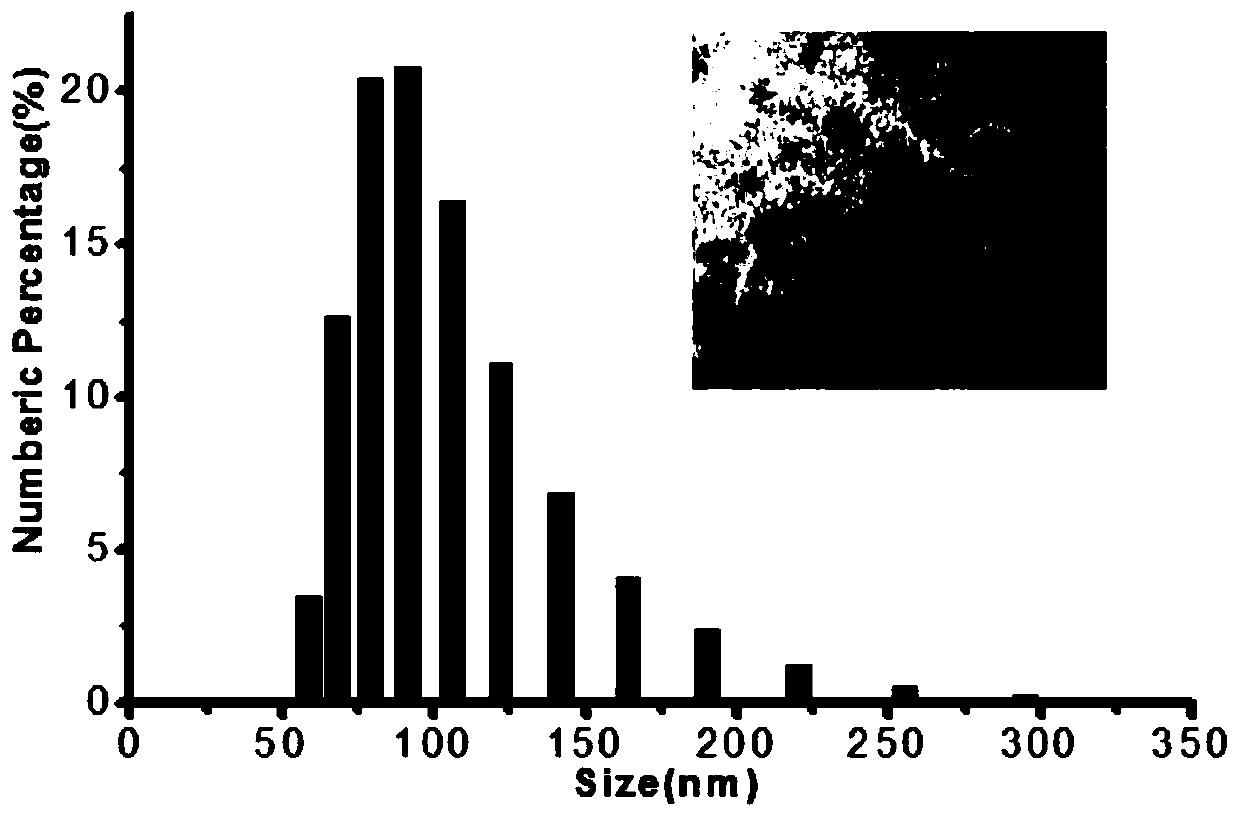Photo-thermal chemotherapy and treatment combined microenvironment responsive drug-loading nano micelle preparation method and application
A combination therapy and drug-loading nanotechnology, applied in the field of nanomedicine, can solve problems such as prolonged circulation time, reduce drug resistance, improve anti-tumor effect, and achieve better anti-tumor effect.
- Summary
- Abstract
- Description
- Claims
- Application Information
AI Technical Summary
Problems solved by technology
Method used
Image
Examples
Embodiment 1
[0047] A drug-loaded nanomicelle that responds to the microenvironment in combination with photothermal chemotherapy, wherein the active ingredient of the drug is doxorubicin (DOX) as an example, and the preparation process is as follows:
[0048] S1.mPEG-NH 2 Synthesis: (1) First, add 18.0g of monomethyl ether mPEG-OH (2000g / mol) into a flask (250mL), and vacuum melt and dry at 70°C to remove water for 8h; after cooling to room temperature, add fresh distillate 100mL of anhydrous benzene was dissolved and stirred evenly;
[0049] (2) Add 0.64 g of naphthalene to another reaction bottle (100 mL) after vacuuming and drying to remove water for 6 hours; add 25 mL of anhydrous THF solvent under the protection of argon, stir and dissolve evenly, and add a small amount of potassium under the protection of argon Solid, prepare potassium naphthalene reagent, stir at room temperature until the solution color becomes dark green;
[0050] (3) Then add 1.2 g of toluenesulfonyl chloride ...
Embodiment 2
[0066]Synthesize an amphiphilic block polymer with reference to Example 1, wherein the polymer is first reacted with N.N-diisopropylethylenediamine, then reacted with benzylamine, and finally undergoes hydrazinolysis. DOX is then connected by the reaction of hydrazine with the carbonyl group of DOX. The method for preparing nanomicelles loaded with DOX and TIID-BT is the same as in Example 1. The obtained nano micelles have an average particle diameter of 100±2.0nm.
Embodiment 3
[0068] By synthesizing mPEG-PBLA-COOH, followed by aminolysis of benzylamine and N.N-diisopropylethylenediamine to obtain mPEG-PASP(BZA)-PASP(DIP)-COOH, and using n-butylamine to initiate BLA in Example 1 -NCA is polymerized, and then undergoes hydrazinolysis, followed by DOX to obtain BA-PAsp(DOX). mPEG-PASP(BZA)-PASP(DIP)-COOH was docked with BA-PAsp(DOX) to obtain mPEG-PASP(BZA)-PASP(DIP)-PASP(DOX). The method for preparing nanomicelles loaded with DOX and TIID-BT is the same as in Example 1. The average particle size of the obtained nano micelles is 105±2.0nm.
PUM
| Property | Measurement | Unit |
|---|---|---|
| molecular weight | aaaaa | aaaaa |
| molecular weight | aaaaa | aaaaa |
| molecular weight | aaaaa | aaaaa |
Abstract
Description
Claims
Application Information
 Login to View More
Login to View More - R&D
- Intellectual Property
- Life Sciences
- Materials
- Tech Scout
- Unparalleled Data Quality
- Higher Quality Content
- 60% Fewer Hallucinations
Browse by: Latest US Patents, China's latest patents, Technical Efficacy Thesaurus, Application Domain, Technology Topic, Popular Technical Reports.
© 2025 PatSnap. All rights reserved.Legal|Privacy policy|Modern Slavery Act Transparency Statement|Sitemap|About US| Contact US: help@patsnap.com



